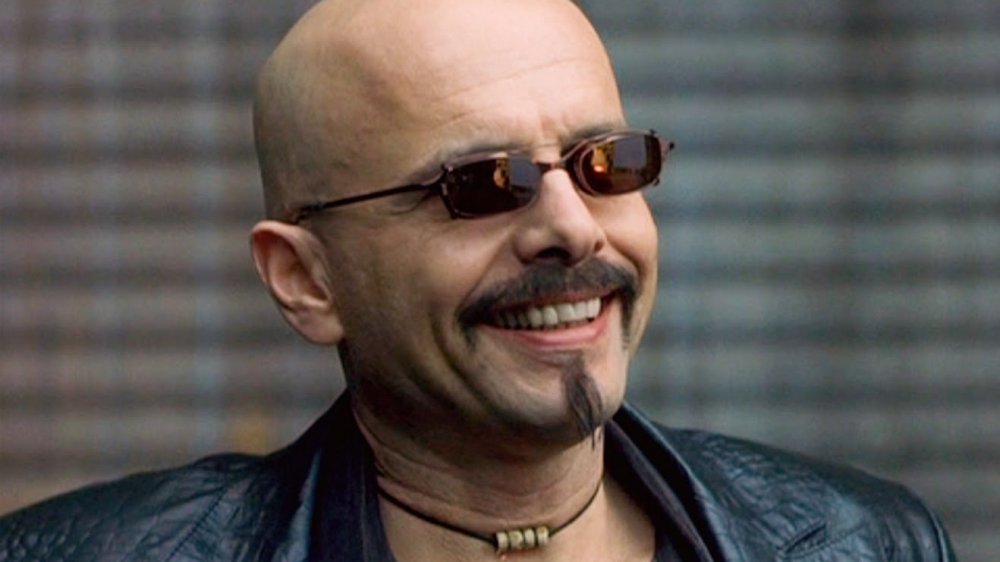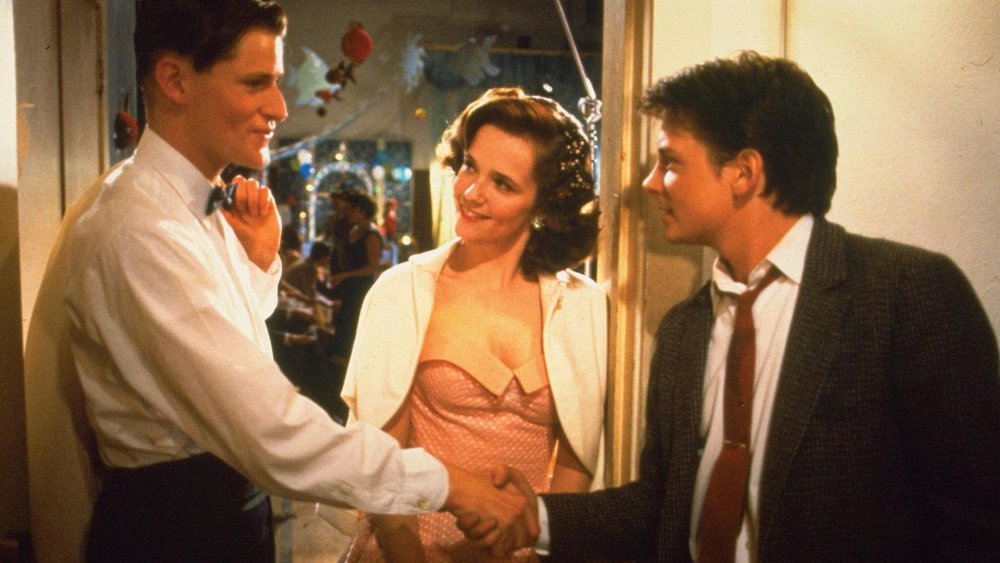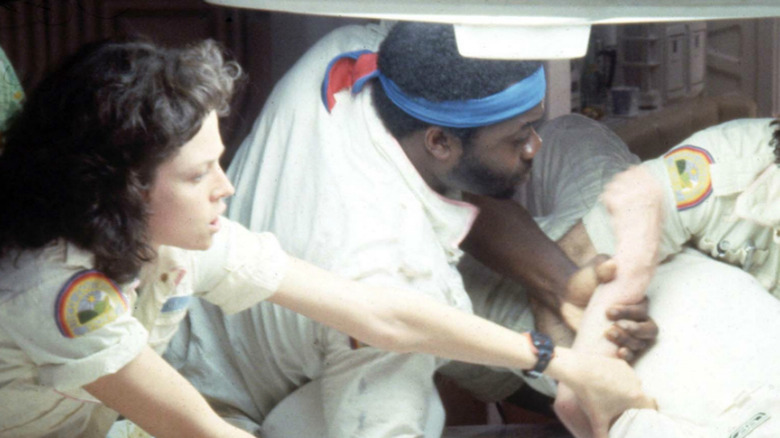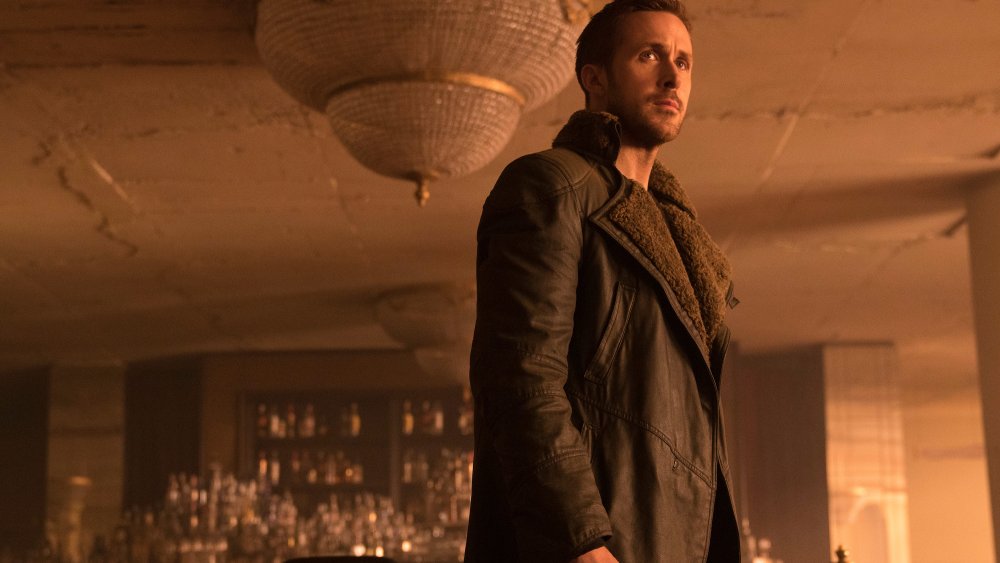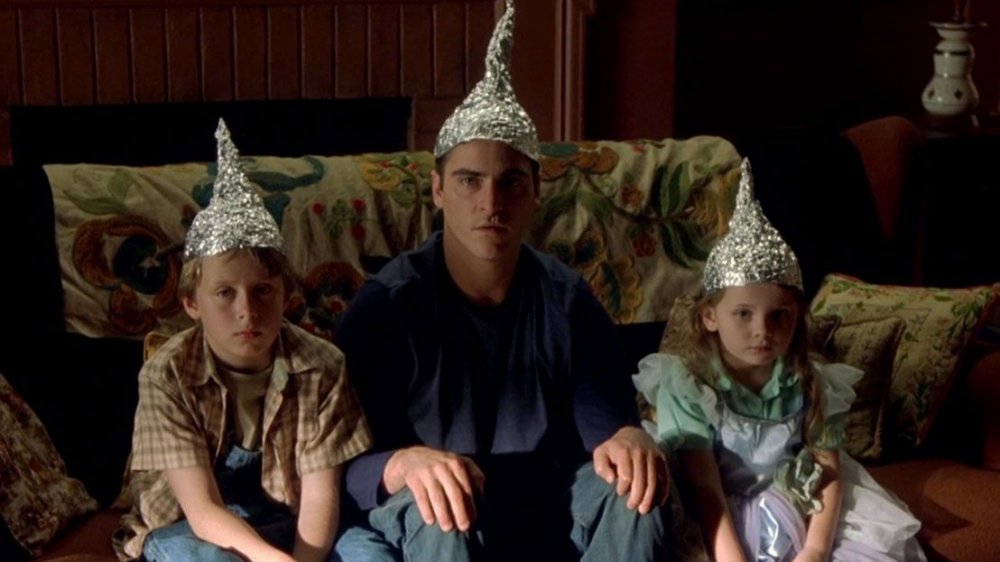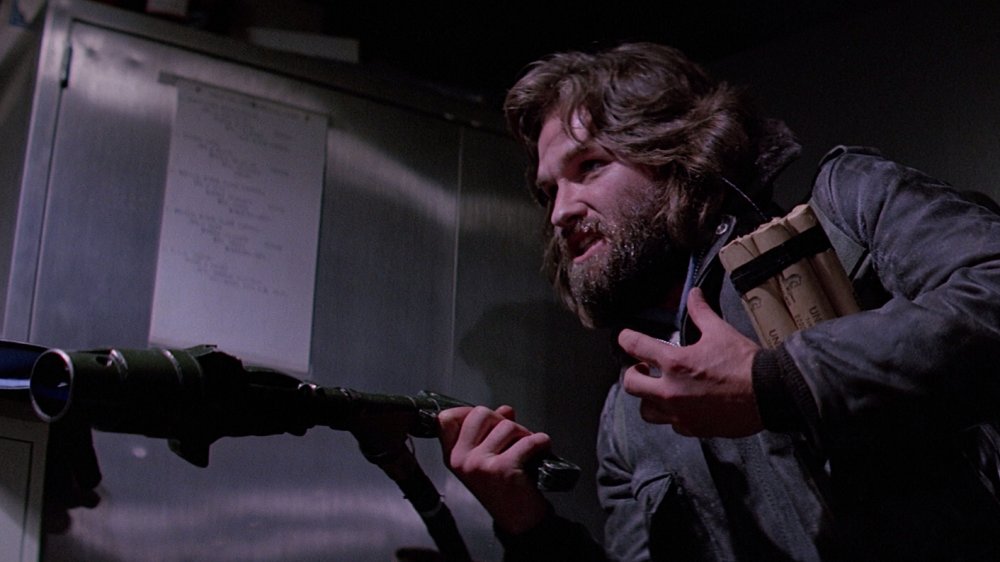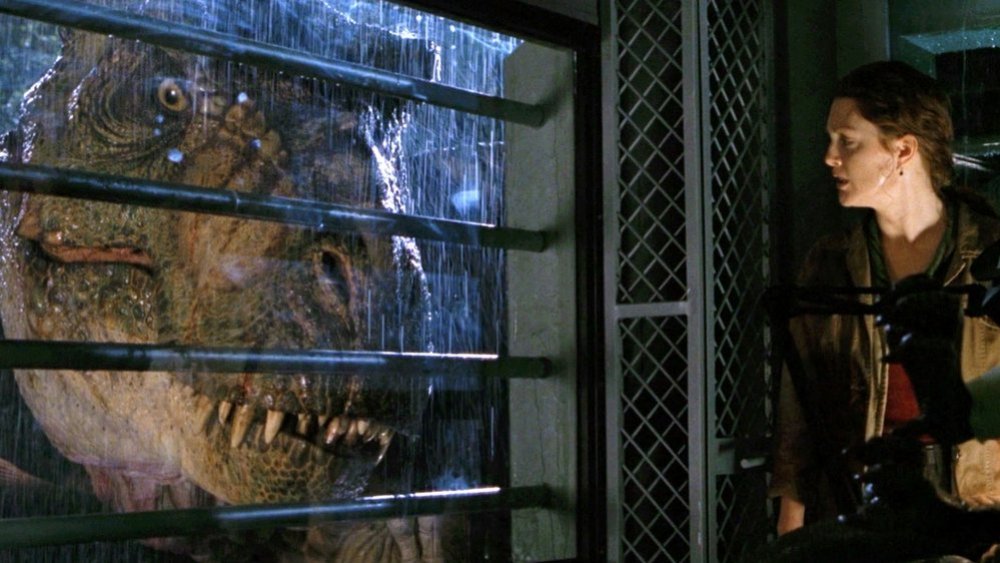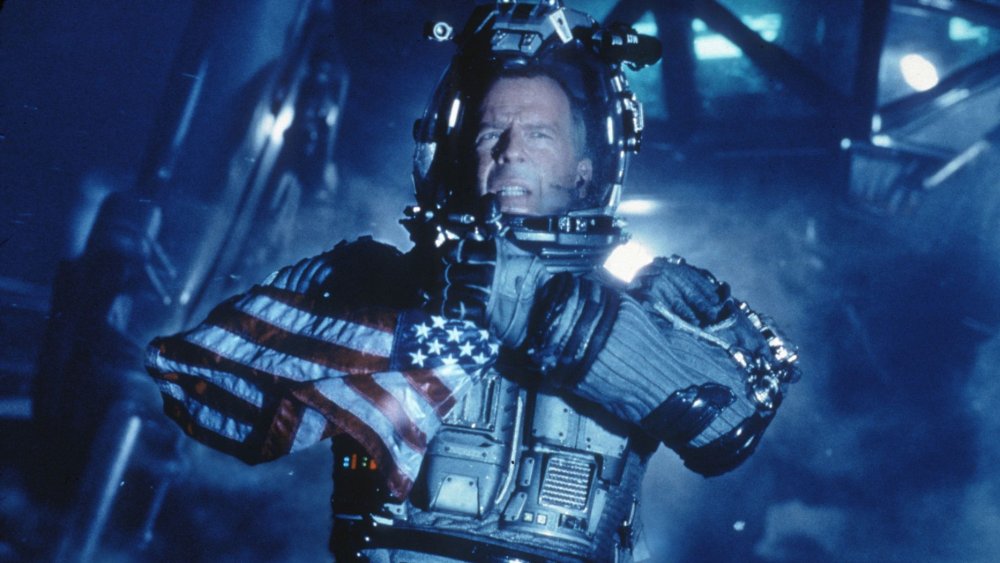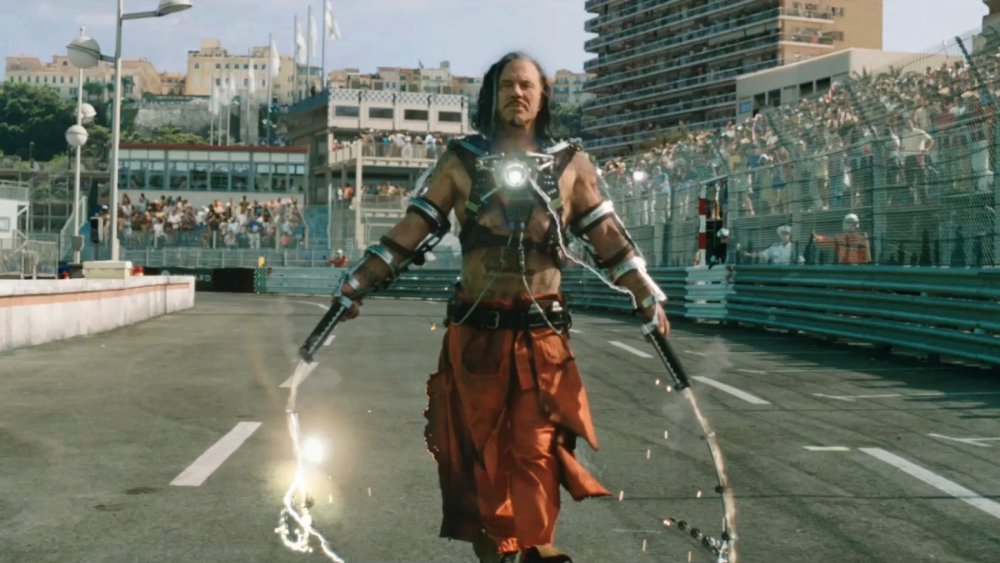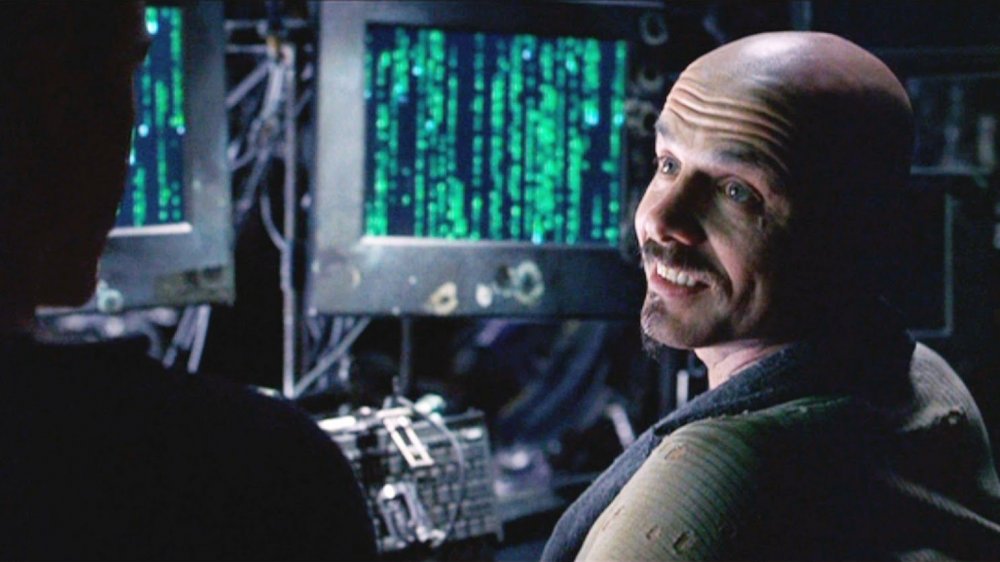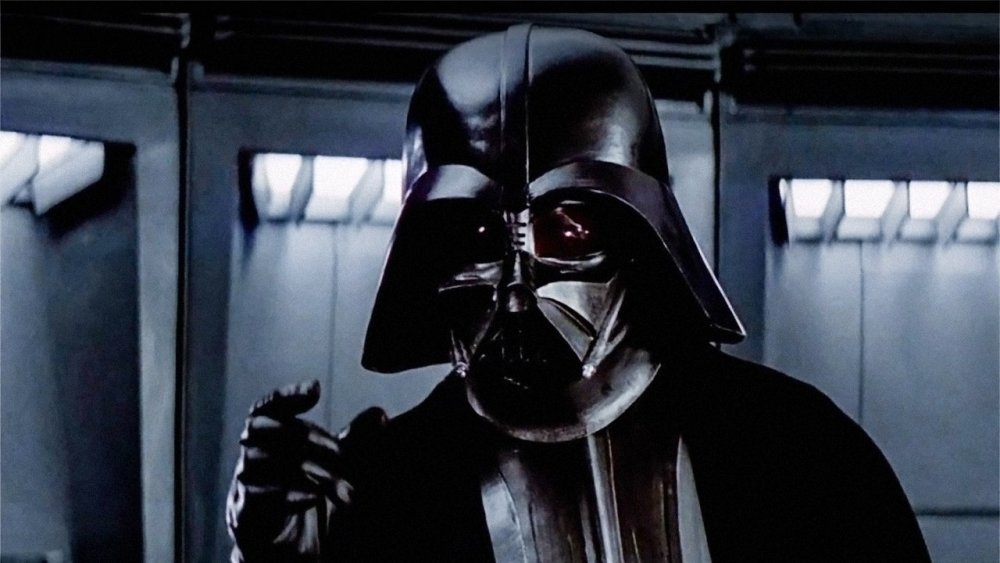The Biggest Plot Holes In Sci-Fi Movies
By its very nature, science fiction aims to push the boundaries of the imagination, urging us to think not only beyond our time but often beyond the very limits of our reality. To accomplish this, sci-fi movies will set their stories in the future, in alternate versions of the present, in space, or will involve as-of-yet undiscovered technologies or scientific principles. As a result, viewers end up confronting questions about unknown threats or opportunities, about what the future might hold, or — more often than not — about aliens.
Much of a sci-fi movie's success is dependent upon the filmmaker's ability to inspire our suspension of disbelief. In other words, they have to make the unbelievable believable, which is no easy task. When you're dealing with implications that extend far beyond our reality — sometimes creating an entirely new reality all together — it can be challenging to the point of impossibility to consider every detail. But while most of the movies on this list do a darn good job of bringing us into their world and having us place our sense of disbelief on the backburner for a couple of hours, it's practically inevitable that the occasional plot hole will pop up. The longer you think about things, the less tightly the puzzle seems to fit together.
To that end, here are a few classic sci-fi movies that have asteroid-sized plot holes.
Spotty memories and time-traveling plot holes
Of all the universally beloved blockbusters, the most universally beloved might just be Back to the Future. Just in case you haven't seen this classic among classics, here's a quick rundown.
When Marty McFly accidentally travels back in time in a time-hopping DeLorean, he lands on the precise day his then-teenage parents met. Once there, he not only screws up his parents' connection but causes his feisty youthful mother to develop a crush on him in the process. Oops and yuck. Later, when he looks at a photo that came back in time with him, he realizes that he's inadvertently caused a future where his parents never get together, and therefore, he's never born. He spends the rest of the movie playing matchmaker for his parents, then trying to get back to his own time.
His efforts are successful, but when he does get back to the future, this is where our questions start. Upon arrival, it's clear that his parents never looked at their son Marty and recognized him as the one who introduced them. Wouldn't they make the connection? Sure, it could be argued that they only knew him for a couple days, but what a couple days they were! His mom got a crush on him, his dad learned how to be more confident from him, then Marty helped to bring the two together. It seems like they would've found it pretty strange that their son grew up to look identical to someone who played such an important role in their lives.
Don't you feel ... weird?
The Alien series is, for the most part, one of the greatest sci-fi franchises ever made. The first two installments are undeniable classics that border on perfection, the third go-around has its moments and has earned an improving reputation as time has gone on, and the fourth one ... exists, as do the prequels and whatever the Alien vs. Predator catastrophes were.
In any case, one thing that's pretty uniform throughout the franchise is how the titular aliens are born. It goes like this. Facehugger comes out of the egg, facehugger hugs a face, an embryo is implanted into the host's rib cage via the throat, then after a somewhat inconsistent number of hours, the baby alien pops out of the host's chest with deadly results. And it seems that generally speaking, the host has no idea they've been impregnated until the thing brutally tears its way out of them. Pretty straightforward, right?
But there's a problem here. The newborn alien that emerges isn't insignificant in size. The creature that came out of Kane's chest in Alien was about the size of a banana. Are you telling us that if you had a banana in your chest, right up in the rib cage alongside the heart, lungs, and spine, you wouldn't feel anything? No pain, no discomfort, nothing?
This seems pretty far-fetched. Of course, most of the scares that come with these wee alien births is dependent upon the surprise, so if Kane or whoever was complaining about chest pains had a scan or whatever, then found out they were expecting an extraterrestrial, a lot of the fun would be taken out of the films. Maybe none of us noticed the plot hole because we were so busy being scared out of our wits?
K is kinda inconsistent in Blade Runner 2049
The original Blade Runner is considered one of the greatest science fiction films of all time. Directed by Ridley Scott, it told the story of a detective known as a "blade runner" who was tasked with finding and killing androids called "replicants" who'd rebelled against their human masters. Set against the backdrop of a visually captivating dystopian future, the movie dealt with a range of heady intellectual questions.
When the 2017 sequel, Blade Runner 2049, came and picked up where its predecessor left off, audiences were treated to a somewhat similar narrative featuring similarly stunning visuals and similarly big questions about the meaning of existence. The only problem with trying to put too many big ideas into your screenplay, however, seems to be that it can be easy to neglect the details.
In the opening scene of Blade Runner 2049, Ryan Gosling's lead character, K — a blade runner — informs his prey that, unlike previous generations of replicants, he's unable to act against his programming by running away from his job. This all seems to track, that is until a few scenes later when K ... flees his job and goes against his programming.
Wait ... didn't he just say that he couldn't do that? It seemed like he reversed on that one pretty fast. While the movie is by in large so engaging that it's hard to notice this logical glitch, it's still impossible to deny that something doesn't add up.
Shyamalan's sci-fi flick is all wet
M. Night Shyamalan's last decent movie before more than a decade of bombs, Signs is about a farming family's attempt to grapple with two life-changing occurrences — the death of their wife and mother and the arrival of aliens. That's right, these bereaved folks, helmed by father Mel Gibson, find themselves doing battle against forces from the stars, and in the end, it turns out that they're saved by the fact that there are glasses of water distributed throughout their home.
This requires a bit of explanation. Early on in the film, it's established that the family's young daughter has a tendency to leave unfinished glasses of water all over the place. We also learn that Mel's younger brother (Joaquin Phoenix) is a retired baseball player. Later, these two character traits overlap when it's realized that the aliens are deathly allergic to water, and the brother defeats them by batting the abandoned glasses of water at them.
The movie had most viewers engaged up until this point, but the ending had a sizable portion of the audience rolling their eyes. This particular plot hole was easy to identify. How did an extraterrestrial species with the capacity to navigate the stars not realize that the vast majority of the Earth's surface was covered with a substance that would kill them? And the aliens were wreaking havoc around the globe for several days by the time we reached the climax — wasn't it raining anywhere? None of them stumbled through a sprinkler or were affected by high humidity?
Nice try, Shyamalan, but it seems that your premise got all wet.
Wait ... scientists with flame throwers?
Widely considered one of the greatest sci-fi horror movies of all time, John Carpenter's The Thing tells the tale of a group of scientists working at an isolated Antarctic research station who stumble upon the burnt remains of an unknown creature with a freaky appearance. All they know about it initially is that it had something to do with the deaths of an entire research team nearby.
It turns out that said creature is not only alive but highly dangerous as it has the ability to infect other living beings — including humans — taking them over and looking indistinguishable from its host. Pretty soon, it becomes a race against time for the scientists to destroy the creature before it infects them all, then eventually all of humanity.
Led by super cool, super tough Kurt Russell, the scientists use everything at their disposal to fight the monster, including burning it with kerosene, blowing it up with dynamite, and torching it with flamethrowers. Herein lies the plot hole. Kerosene and dynamite, okay, both of these make sense, but why would a research lab have weapons-grade flamethrowers? And they have not one but two of them. How often are these scientists expected to light up and fight with fire?
It's a small detail that's easy to overlook, but upon reflection, it becomes obvious that they're only there for plot convenience. They might be plot convenient, but they're also plot holes.
That's one sneaky T-Rex
The first installment of the Jurassic Park franchise was just about as close to perfect as can be. Sure, it had its fair share of plot holes, but the movie as a whole was so deftly executed that we either didn't notice them or didn't care. Its sequel, The Lost World, however, received mixed reviews at best.
Telling the story of a team of researchers racing to study a second island's worth of dinos before the evil, money-grubbing investors can get their hands on them, The Lost World benefited from having plenty of genuinely real looking dinosaurs and the return of Jeff Goldblum as fan-favorite Ian Malcom. One of the biggest problems with the film, however, was that its plot structure was rather loose, with a number of questionable narrative jumps. The most looming of these came when the Tyrannosaurus arrived by ship in San Diego.
When the boat docks, it turns out that the entire crew is missing, presumably eaten by the T-Rex contained in the cargo hold. But how did the gigantic Rex escape the hold, eat everyone on board (even in the bridge and cabins), then tuck itself back into the belly of the boat, door closed and everything? To put it plainly, none of that makes sense.
This isn't the first time that we've seen the sneaky T-Rex pull its ninja act, either. In Jurassic Park, many people wondered how the Tyrannosaurus crept into the Visitor Center unnoticed during the climatic battle against the raptors, but creep in it did. For an eight-ton creature with a tendency to bellow, that's a pretty impressive feat. With the first movie, we were willing to overlook that nonsense, but the second go-around simply wasn't solid enough to keep us from scratching our heads.
The glaring plot hole in Michael Bay's sci-fi epic
Back in 1998, Armageddon was one of the smash hits of the year, and audiences seemed more or less fine with the fact that it was a big, flashy, mostly hollow Michael Bay spectacle. As its Rotten Tomatoes consensus explains, the film was "about as intelligent as the asteroid that serves as the movie's antagonist." But that was okay. It had Bruce Willis and Ben Affleck and that Aerosmith song that everybody loved at the time (but we'd all happily never hear again).
So, what made Armageddon so flawed that it caused one reviewer to claim that "it could have been written by a chimp who's watched too much TV?" Just look at the premise. An asteroid is heading toward Earth, so NASA trains a bunch of oil drill workers to fly up, drill in, and blow it to bits. That doesn't seem so bad until you think about it for like a second.
Why would NASA train drill operators to be astronauts rather than training astronauts to operate a drill? Astronauts tend to be engineers who are highly intelligent and skilled at a wide range of mechanical operative tasks. It must be easier to teach one of them to run a drill than it is to teach a whole crew of non-astronauts to fly to and survive in space, right?
But, again, this wasn't much of a "thinking" movie. We were mostly in it for the explosions.
Whiplash didn't have the power of foresight, did he?
When Iron Man kicked off the MCU back in 2008, no one knew what kind of juggernaut of a franchise had just been initiated. Today, the Infinity Saga spans a mind-boggling 23 movies, but when Iron Man 2 came out in 2010, most fans probably thought we'd get one or two more Stark movies at most. Oh, how naive we were.
Iron Man 2 was an undeniably exciting continuation of the titular hero's self-contained story, but it did have its share of head-scratching plot holes. Before we get into that, let's take a look at the plot itself. In a nutshell, the film revolves largely around Tony Stark's attempt to maintain control over his weapon tech in the face of a government that would really, really like to get their hands on his fancy toys. When a competing weapons manufacturer teams up with a big, bad electronics wizard with a grudge against Stark, he suddenly finds himself facing off against a dangerously armed rival called Whiplash.
Tony first encounters Whiplash at a Grand Prix race in which Stark decides to pull his company's driver in favor of running the race himself. In the middle of the race, Whiplash emerges on the track and starts wreaking havoc. It's an intensely thrilling scene, but there's one major problem. How did Whiplash know that Tony would be in the race? Stark took over the car literally moments before the race began, and we're pretty sure that Whiplash didn't have the power to see the future. If you can ignore this jump in logic, the movie still delivers plenty of fun, but any way you cut it, this is still a pretty big plot hole.
How exactly did Cypher do that?
In 1999, The Matrix closed out the millennium with a bang, instantly becoming one of the most popular movies of all time and spawning a franchise that's still growing to this day. The Matrix tells the story of Neo, a hacker who learns that reality as we know it is in fact a computer simulation created by intelligent machine overlords who use humans for batteries. The Matrix itself acts as a prison for the human mind.
Most of the humans who've escaped the Matrix work tirelessly to defeat the machines, but a turning point comes when one freedom fighter named Cypher decides that he's willing to turn on his fellow homo sapiens on the condition that he's plugged back into the simulation. In a pivotal scene, Cypher goes into the Matrix to powwow with a representative of the machines, and his impending betrayal is revealed to the audience.
But there's a major problem here. Earlier in the movie, it's established that for a person to visit the Matrix, they need an "operator" to run the equipment necessary to guide them in and out. While it's never made explicit that an operator is needed to enter the Matrix, it's made abundantly clear that without someone to provide you with a line out, you're essentially trapped in the simulation. So how did Cypher get in and out for his secret meeting? Is there some super secret method that we don't know about? Or could it be that this is a plot hole big enough to run a herd of CGI elephants through?
Darth Vader's convenient Force knowledge is a bit of a plot hole
The Star Wars franchise is one of the most beloved IPs in the galaxy, rich with lovable characters, thrilling battles, and adorable Yodas both young and old. Over the years, many of us have watched its many installments so many times that we know every line and detail by heart. The only problem with having your audience pay that much attention, however, is that they're bound to spot all the plot holes that may arise.
And Star Wars certainly has no shortage of those. If they were trying to hide Luke from Vader, why did they let him use his very real Skywalker name? Why didn't Obi-Wan recognize the droids he'd spent so much time around? How does Leia remember her mother, who died during childbirth? And why was there a Jar-Jar Binks in the first place? Okay, maybe that last one wasn't a plot hole, but it's still a valid question.
In any case, we're here to talk about a very specific plot hole — Darth Vader's inconsistent Force knowledge. It sure does seem like Vader has the ability to learn certain information via the Force —or not — whenever it's convenient to the plot. For example, in Return of the Jedi, he's able to plumb Luke's mind to learn the identity of his sister, but in A New Hope, he can't learn the location of the rebel base from Leia? And he's able to communicate with or at least identify Luke from vast distances — between Vader's Super Star Destroyer and the Millennium Falcon in The Empire Strikes Back, for example — but he can't find him when he's hiding in the shadows during their final showdown on the second Death Star? And while we're here, why didn't he recognize the droids? He literally built C-3PO, after all.
Bottom line, it sure seems like the use of Vader's powers fluctuate based on how they serve the plot. So does that ruin Star Wars? Not one bit.
